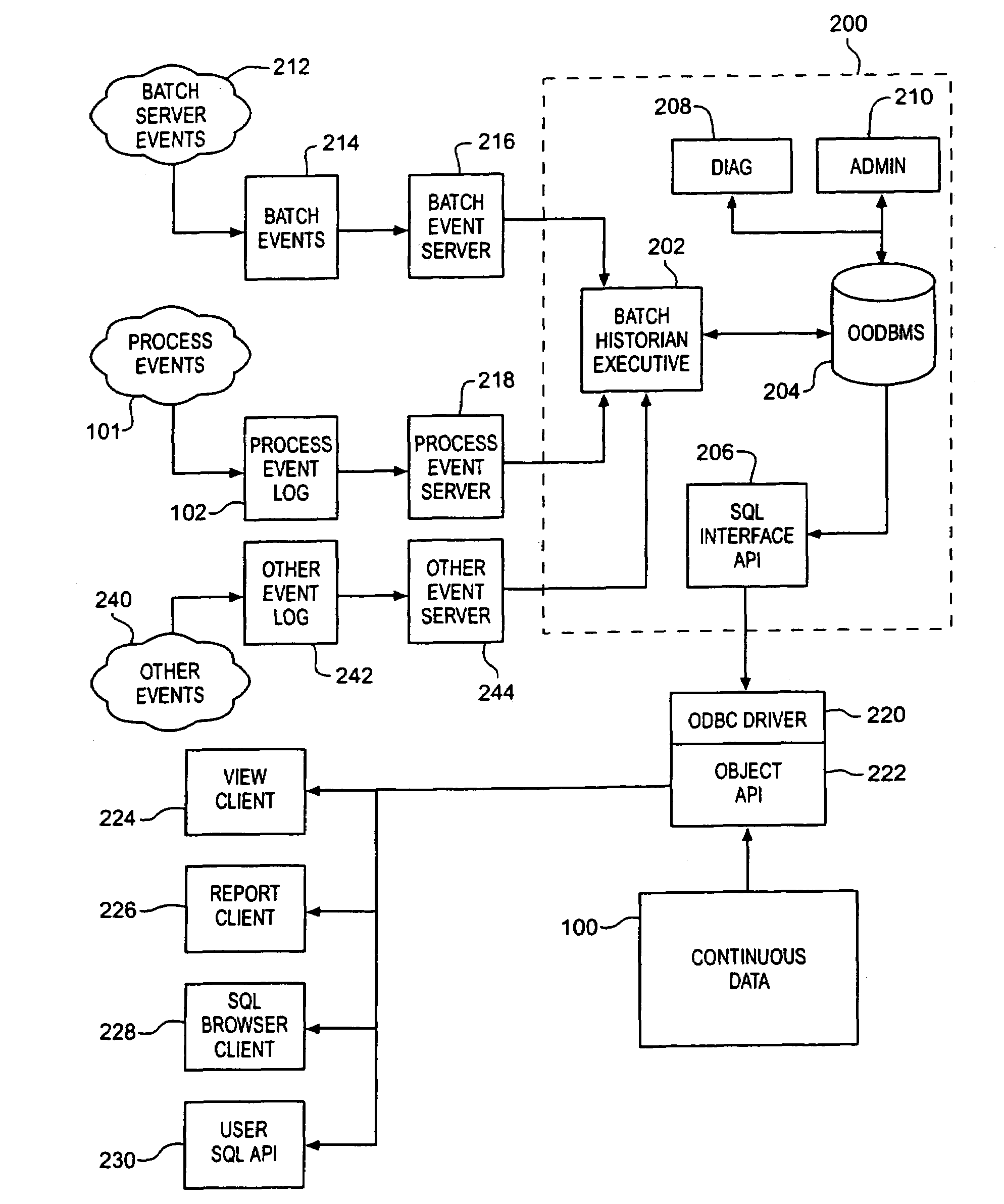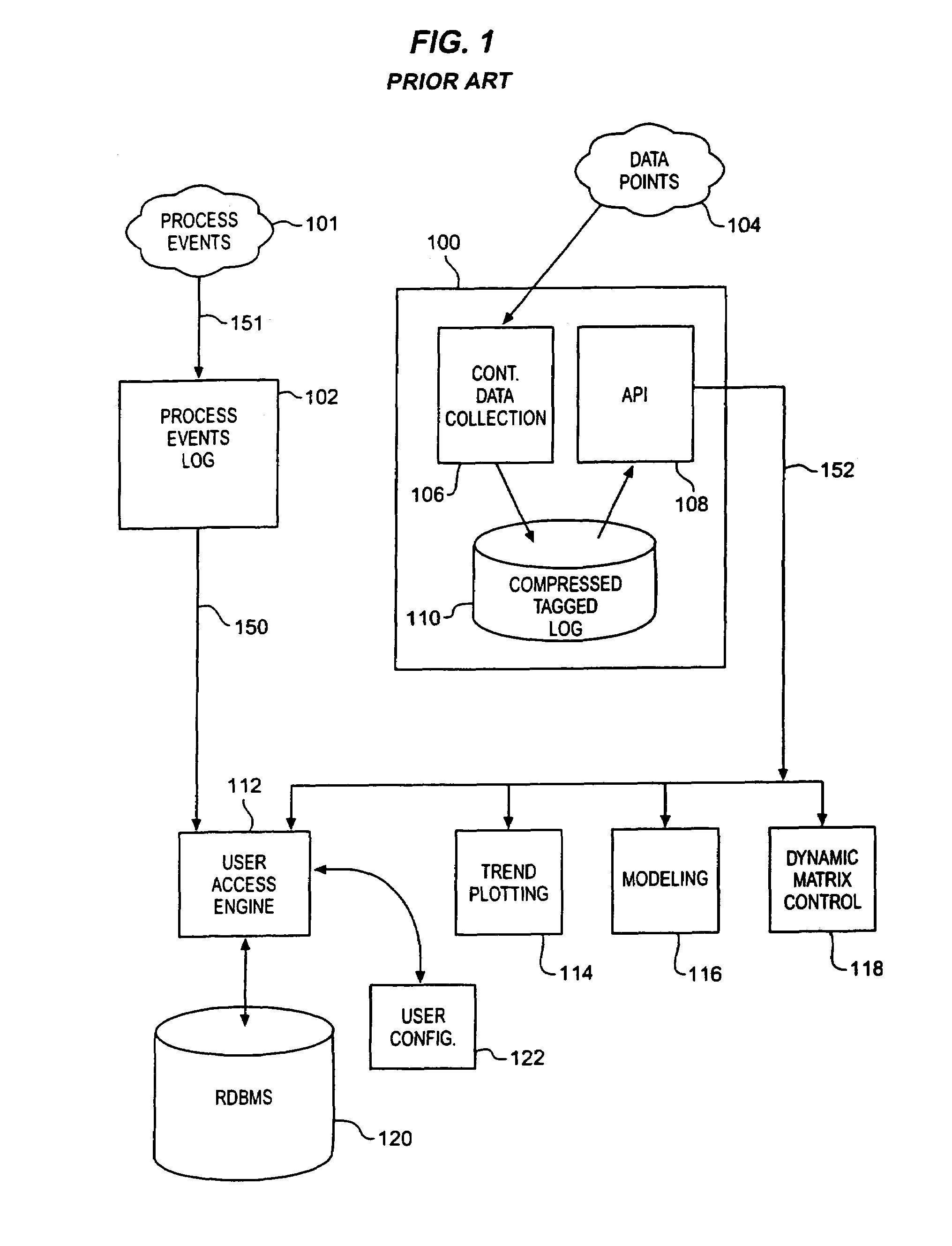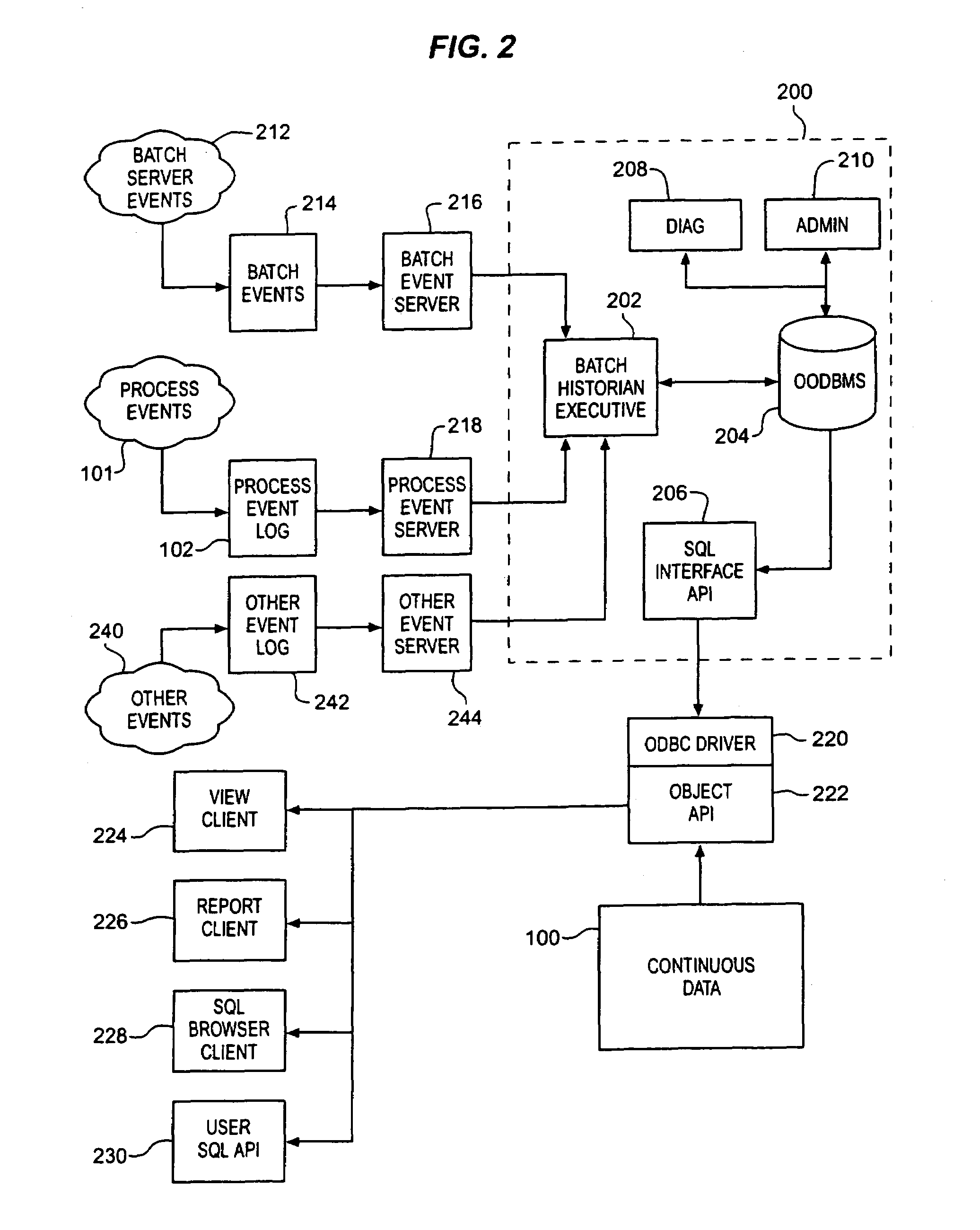Methods and structure for batch processing event history processing and viewing
a batch processing and event history technology, applied in the field of batch processing event history processing and viewing, can solve the problems of destroying the batch of food, affecting the production of large quantities of products, and insufficient yield of polyvinyl chloride from the process, so as to achieve effective capture, storage and presentation of historical effects
- Summary
- Abstract
- Description
- Claims
- Application Information
AI Technical Summary
Benefits of technology
Problems solved by technology
Method used
Image
Examples
Embodiment Construction
[0055]While the invention is susceptible to various modifications and alternative forms, a specific embodiment thereof has been shown by way of example in the drawings and will herein be described in detail. It should be understood, however, that it is not intended to limit the invention to the particular form disclosed, but on the contrary, the invention is to cover all modifications, equivalents, and alternatives falling within the spirit and scope of the invention as defined by the appended claims.
Batch Event Historian System
[0056]FIG. 1 is a block diagram depicting the presently known state of the art for recordation and presentation of historical data relating to a batch processing environment. A continuous data log 100 records tagged information corresponding to a multitude of continuous data sources in the batch processing environment. In particular, continuous data collection element 106 receives present a stream of continuous values from each of a plurality of data points 1...
PUM
 Login to View More
Login to View More Abstract
Description
Claims
Application Information
 Login to View More
Login to View More - R&D
- Intellectual Property
- Life Sciences
- Materials
- Tech Scout
- Unparalleled Data Quality
- Higher Quality Content
- 60% Fewer Hallucinations
Browse by: Latest US Patents, China's latest patents, Technical Efficacy Thesaurus, Application Domain, Technology Topic, Popular Technical Reports.
© 2025 PatSnap. All rights reserved.Legal|Privacy policy|Modern Slavery Act Transparency Statement|Sitemap|About US| Contact US: help@patsnap.com



